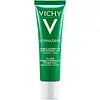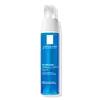Vichy Normaderm Double-Correction Moisturising Care Versus La Roche-Posay Toleriane Dermallergo Night Moisturizer
What's inside
What's inside
 Key Ingredients
Key Ingredients

 Benefits
Benefits

 Concerns
Concerns

 Ingredients Side-by-side
Ingredients Side-by-side

Water
Skin ConditioningGlycerin
HumectantButylene Glycol
HumectantSalicylic Acid
MaskingIsononyl Isononanoate
EmollientKaolin
AbrasiveHydrolyzed Algin
Zinc Sulfate
AntimicrobialBifida Ferment Lysate
Skin ConditioningSarcosine
Skin ConditioningSodium Hyaluronate
HumectantSodium Hydroxide
BufferingTrisodium Ethylenediamine Disuccinate
Ascorbyl Glucoside
AntioxidantAcetic Acid
BufferingAcrylates/C10-30 Alkyl Acrylate Crosspolymer
Emulsion StabilisingBiosaccharide Gum-1
HumectantCaprylyl Glycol
EmollientLactic Acid
BufferingMaltodextrin
AbsorbentPentylene Glycol
Skin ConditioningSodium Polyacrylate
AbsorbentXanthan Gum
EmulsifyingSodium Benzoate
MaskingParfum
MaskingWater, Glycerin, Butylene Glycol, Salicylic Acid, Isononyl Isononanoate, Kaolin, Hydrolyzed Algin, Zinc Sulfate, Bifida Ferment Lysate, Sarcosine, Sodium Hyaluronate, Sodium Hydroxide, Trisodium Ethylenediamine Disuccinate, Ascorbyl Glucoside, Acetic Acid, Acrylates/C10-30 Alkyl Acrylate Crosspolymer, Biosaccharide Gum-1, Caprylyl Glycol, Lactic Acid, Maltodextrin, Pentylene Glycol, Sodium Polyacrylate, Xanthan Gum, Sodium Benzoate, Parfum
Water
Skin ConditioningGlycerin
HumectantButylene Glycol
HumectantPropanediol
SolventButyrospermum Parkii Butter
Skin ConditioningPentylene Glycol
Skin ConditioningSqualane
EmollientNiacinamide
SmoothingAmmonium Polyacryloyldimethyl Taurate
Emulsion StabilisingPyridoxine Hcl
Skin ConditioningPolysorbate 20
EmulsifyingZea Mays Starch
AbsorbentSalvia Miltiorrhiza Root Extract
Skin ConditioningAllantoin
Skin ConditioningGlyceryl Acrylate/Acrylic Acid Copolymer
HumectantSodium Hydroxide
BufferingSphingomonas Ferment Extract
Skin ConditioningHydroxyacetophenone
AntioxidantCaprylyl Glycol
EmollientCitric Acid
BufferingTrisodium Ethylenediamine Disuccinate
Acetyl Dipeptide-1 Cetyl Ester
Skin ConditioningXanthan Gum
EmulsifyingTocopherol
AntioxidantWater, Glycerin, Butylene Glycol, Propanediol, Butyrospermum Parkii Butter, Pentylene Glycol, Squalane, Niacinamide, Ammonium Polyacryloyldimethyl Taurate, Pyridoxine Hcl, Polysorbate 20, Zea Mays Starch, Salvia Miltiorrhiza Root Extract, Allantoin, Glyceryl Acrylate/Acrylic Acid Copolymer, Sodium Hydroxide, Sphingomonas Ferment Extract, Hydroxyacetophenone, Caprylyl Glycol, Citric Acid, Trisodium Ethylenediamine Disuccinate, Acetyl Dipeptide-1 Cetyl Ester, Xanthan Gum, Tocopherol
 Reviews
Reviews

Ingredients Explained
These ingredients are found in both products.
Ingredients higher up in an ingredient list are typically present in a larger amount.
Butylene Glycol (or BG) is used within cosmetic products for a few different reasons:
Overall, Butylene Glycol is a safe and well-rounded ingredient that works well with other ingredients.
Though this ingredient works well with most skin types, some people with sensitive skin may experience a reaction such as allergic rashes, closed comedones, or itchiness.
Learn more about Butylene GlycolCaprylyl Glycol is a humectant and emollient, meaning it attracts and preserves moisture.
It is a common ingredient in many products, especially those designed to hydrate skin. The primary benefits are retaining moisture, skin softening, and promoting a healthy skin barrier.
Though Caprylyl Glycol is an alcohol derived from fatty acids, it is not the kind that can dry out skin.
This ingredient is also used as a preservative to extend the life of products. It has slight antimicrobial properties.
Learn more about Caprylyl GlycolGlycerin is already naturally found in your skin. It helps moisturize and protect your skin.
A study from 2016 found glycerin to be more effective as a humectant than AHAs and hyaluronic acid.
As a humectant, it helps the skin stay hydrated by pulling moisture to your skin. The low molecular weight of glycerin allows it to pull moisture into the deeper layers of your skin.
Hydrated skin improves your skin barrier; Your skin barrier helps protect against irritants and bacteria.
Glycerin has also been found to have antimicrobial and antiviral properties. Due to these properties, glycerin is often used in wound and burn treatments.
In cosmetics, glycerin is usually derived from plants such as soybean or palm. However, it can also be sourced from animals, such as tallow or animal fat.
This ingredient is organic, colorless, odorless, and non-toxic.
Glycerin is the name for this ingredient in American English. British English uses Glycerol/Glycerine.
Learn more about GlycerinPentylene glycol is typically used within a product to thicken it. It also adds a smooth, soft, and moisturizing feel to the product. It is naturally found in plants such as sugar beets.
The hydrophilic trait of Pentylene Glycol makes it a humectant. As a humectant, Pentylene Glycol helps draw moisture from the air to your skin. This can help keep your skin hydrated.
This property also makes Pentylene Glycol a great texture enhancer. It can also help thicken or stabilize a product.
Pentylene Glycol also acts as a mild preservative and helps to keep a product microbe-free.
Some people may experience mild eye and skin irritation from Pentylene Glycol. We always recommend speaking with a professional about using this ingredient in your routine.
Pentylene Glycol has a low molecular weight and is part of the 1,2-glycol family.
Learn more about Pentylene GlycolSodium Hydroxide is also known as lye or caustic soda. It is used to adjust the pH of products; many ingredients require a specific pH to be effective.
In small amounts, sodium hydroxide is considered safe to use. However, large amounts may cause chemical burns due to its high alkaline.
Your skin has a natural pH and acid mantle. This acid mantle helps prevent harmful bacteria from breaking through. The acid mantle also helps keep your skin hydrated.
"Alkaline" refers to a high pH level. A low pH level would be considered acidic.
Learn more about Sodium HydroxideTrisodium Ethylenediamine Disuccinate is used to help stabilize a product.
It is a chelating agent, meaning it helps prevent metal ions from binding to other ingredients. This prevents unwanted reactions in products. Metal ions can come into a product via the water ingredient. They are found in trace amounts and are not known to be harmful.
Water. It's the most common cosmetic ingredient of all. You'll usually see it at the top of ingredient lists, meaning that it makes up the largest part of the product.
So why is it so popular? Water most often acts as a solvent - this means that it helps dissolve other ingredients into the formulation.
You'll also recognize water as that liquid we all need to stay alive. If you see this, drink a glass of water. Stay hydrated!
Learn more about WaterXanthan gum is used as a stabilizer and thickener within cosmetic products. It helps give products a sticky, thick feeling - preventing them from being too runny.
On the technical side of things, xanthan gum is a polysaccharide - a combination consisting of multiple sugar molecules bonded together.
Xanthan gum is a pretty common and great ingredient. It is a natural, non-toxic, non-irritating ingredient that is also commonly used in food products.
Learn more about Xanthan Gum